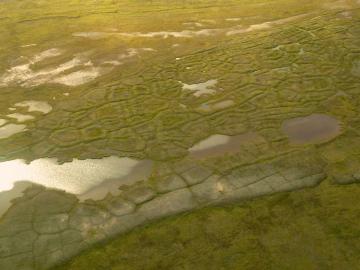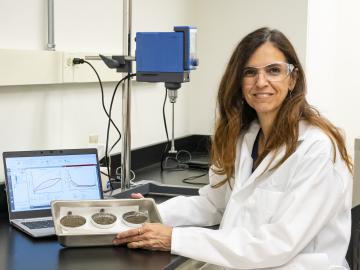
Filter News
Area of Research
- (-) Biology and Environment (25)
- (-) Energy Science (55)
- (-) Supercomputing (39)
- Advanced Manufacturing (3)
- Computational Engineering (1)
- Computer Science (2)
- Fusion and Fission (3)
- Isotopes (1)
- Materials (32)
- Materials for Computing (7)
- National Security (14)
- Neutron Science (7)
- Nuclear Science and Technology (2)
- Quantum information Science (1)
News Type
News Topics
- (-) Buildings (14)
- (-) Computer Science (41)
- (-) Machine Learning (11)
- (-) Microscopy (13)
- (-) Polymers (6)
- 3-D Printing/Advanced Manufacturing (41)
- Advanced Reactors (3)
- Artificial Intelligence (15)
- Big Data (7)
- Bioenergy (31)
- Biology (36)
- Biomedical (13)
- Biotechnology (8)
- Chemical Sciences (14)
- Clean Water (6)
- Composites (7)
- Coronavirus (16)
- Critical Materials (5)
- Cybersecurity (10)
- Energy Storage (39)
- Environment (58)
- Exascale Computing (10)
- Fossil Energy (1)
- Frontier (13)
- Fusion (2)
- Grid (16)
- High-Performance Computing (23)
- Hydropower (2)
- Isotopes (2)
- Materials (27)
- Materials Science (20)
- Mathematics (4)
- Mercury (5)
- Molten Salt (1)
- Nanotechnology (8)
- National Security (8)
- Neutron Science (14)
- Nuclear Energy (5)
- Partnerships (8)
- Physics (5)
- Quantum Computing (5)
- Quantum Science (11)
- Security (8)
- Simulation (10)
- Space Exploration (1)
- Summit (18)
- Transportation (28)
Media Contacts

Like most scientists, Chengping Chai is not content with the surface of things: He wants to probe beyond to learn what’s really going on. But in his case, he is literally building a map of the world beneath, using seismic and acoustic data that reveal when and where the earth moves.

When reading the novel Jurassic Park as a teenager, Jerry Parks found the passages about gene sequencing and supercomputers fascinating, but never imagined he might someday pursue such futuristic-sounding science.

Computing pioneer Jack Dongarra has been elected to the National Academy of Sciences in recognition of his distinguished and continuing achievements in original research.

Researchers at ORNL have developed a machine-learning inspired software package that provides end-to-end image analysis of electron and scanning probe microscopy images.

Oak Ridge National Laboratory scientists set out to address one of the biggest uncertainties about how carbon-rich permafrost will respond to gradual sinking of the land surface as temperatures rise.

Hydrologist Jesús “Chucho” Gomez-Velez is in the right place at the right time with the right tools and colleagues to explain how the smallest processes within river corridors can have a tremendous impact on large-scale ecosystems.

John “Jack” Cahill is out to illuminate previously unseen processes with new technology, advancing our understanding of how chemicals interact to influence complex systems whether it’s in the human body or in the world beneath our feet.

As the United States shifts away from fossil-fuel-burning cars and trucks, scientists at the Department of Energy’s Oak Ridge and Argonne national laboratories are exploring options for another form of transportation: trains. The research focuses on zero-carbon hydrogen and other low-carbon fuels as viable alternatives to diesel for the rail industry.

Laboratory Director Thomas Zacharia presented five Director’s Awards during Saturday night's annual Awards Night event hosted by UT-Battelle, which manages ORNL for the Department of Energy.

Materials scientist Denise Antunes da Silva researches ways to reduce concrete’s embodied carbon in the Sustainable Building Materials Laboratory at ORNL, a research space dedicated to studying environmentally friendly building materials. Credit: ORNL, U.S. Dept. of Energy


